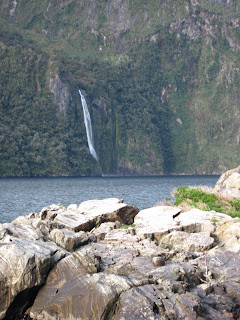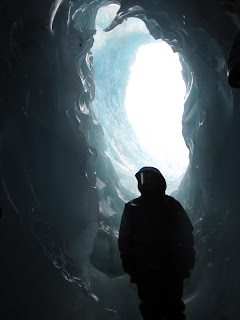Since being back in the UK I have been mainly drinking tea and trying to sleep at normal times, so haven't yet reviewed the 13 films I watched on the plane home. However, as some people appeared a little distressed at the lack of reviews, here they are:
(DISCLAIMER: It is possible sleep deprivation was responsible for my initial wittiness. Sorry.)
1) The Chronicles of Narnia: Prince Caspian : ****
I quite enjoyed this one as the very first scene is set in the Coromandel Peninsula, which I went to in the first road trip of the holiday.
As you can probably tell, the Pevensie children are in the first picture, in casual clothes, and we are in the second, in our school uniform.
Morals of the story:
- Jesus is omniscient, omnipresent and has a lovely golden mane.
- Prince Caspian is hawt. Yum.
2) Megamind: ***
Child with big head just wants some friends but keeps accidentally causing mischief so no one likes him. Surprise surprise, children who are bullied, friendless and have no parents grow up to be crazy murderers. Bit of a downer for a kids film really.
Morals of the story:
- Always plot your baby's head circumference on their growth chart. Hydrocephalus is not to be taken lightly.
- Nurture, not nature.
3) Gulliver's Travels
Jack Black takes his usual character (stuck in dead end job with no prospects but really it's okay because he can do silly voices) to the land of the mini-people to impress a girl. He tells them he is a king and a magnificent person, and makes them act out Star Wars. When they find out he is not a king or Luke Skywalker they cast him out, and he ends up in a giant girl's doll house. But then the mini-people need his help to kill a robot, and it ends up all right in the end. He even gets the girl, who is way out of his league because he is quite chunky and a girl like that would never go out with a guy like him. Ptsch. Just makes the whole storyline unbelievable.
Morals of the story:
- You don't need qualifications or transferable skills to make it in this world, as long as you have a beard and can play air guitar.
- There must be something about Jack Black's body that lets him get the pretty girls in all these films, but it's probably best we don't know what it is.
4) Legend of the Guardians: The Owls of Ga'hoole : *
Owl civil war. The owls wear metal claws and helmets and fight with fire. I get the sneaking suspicion it is not based on a true story.
Morals of the story:
- Not all heroes are easy on the eye.
- If your brother turns against you and joins the Nazi-Owls don't panic: just push him into a burning pit.
5) Avatar: ***
Blue-man meets Blue-woman and they make the beast with two backs in a pretty forest. There is some plot somewhere about war or some such thing, but that's not important. I only watched half of this film, but as it is so long that's about the same length as a normal film so I'm adding it to the tally.
Morals of the story:
- Best not to try to kill and enslave your lover's people. Leads to tension in the bedroom.
- Science can be exploited to fight wars. Gosh, who knew?
6) No Strings Attached: ****
Ashton Kutcher and Natalie Portman decide to have a friends-with-benefits style relationship, but in a quirky twist the man falls for the woman and the woman is all like 'NO I JUST WANT CASUAL FUN'. I dislike this film as it does not stick to stereotypical gender norms and I disagree with that. I mean come on, only men are allowed to have casual relationships. If women do they must have loose morals and we should shun them. But if they then fall in love too and they become a very cute couple it's okay.
Morals of the story:
- Men can have emotions, and the world doesn't implode.
- Women can have casual relationships, and the world does't implode.
7) Morning Glory: ****
Perky, chipper woman manages to persuade a surly, arrogant journalist to be an anchor on her breakfast show. There is some strife, and he is mean, and she is frustrated, and then he makes her some eggs and all is forgiven.
Morals of the story:
- Eggs make everything better.
- No seriously, I have a cold and I'd love some eggs right now. Eggs, anyone? Guys? Anyone?!
8) Wall Street: Money Never Sleeps : <*
Money money blah blah blah.
Morals of the story:
- Blah.
- Blah blah.
9) The Tourist: ***
Angelina Jolie runs around Venice pouting and setting up Johnny Depp in an attempt to draw the police away from her lover and major-league criminal. Except it turns out that...no, I won't ruin the twist. But you'll see it coming a mile off.
Morals of the story:
- As long as you pout and wear expensive jewellery you can do pretty much anything in Italy.
- Never send a woman to do a man's job. They just fall in love and mess things up (compare and contrast: No Strings Attached).
10) The Green Hornet: ****
Billionaire dies and leaves entire fortune and business to his waster son. Big Mistake. Waster son makes friends with a Chinese genius-cum-barista and they use mad engineering skillz and truckloads of money to rid the city of criminals, while trying to look like they are criminals too.
Now that, in my opinion, is the first mistake in their plan. If you're going to be chased by all the criminals whose meth dens you're blowing up, then why deliberately have the police coming after you too? Idiots.
Morals of the story:
- Don't leave your media empire to your waster son. He'll just use it to put rocket torpedoes in his car.
- However, rocket torpedoes do make any car much cooler, so maybe you should leave your media empire to your waster son.
11) Little Fockers: **
Predictable jokes about unfortunate surnames and troublesome father-in-laws. Bit dull, not sure why I watched it. Oh yeah, I remember, I was on a 36 hour flight.
Morals of the story:
- Pulse rates are accurate predictors of whether someone is lying or not. Y'know, someone should use that and make like, a machine that detects lying or something. I'm sure it would be foolproof. Then they could use it on high-end entertainment shows on daytime telly to greatly enrich and stabilise the lives of those in the lower socio-economic classes. I'm sure all these poor people's problems could be alleviated if they knew the truth.
- Sometimes doctors are horrible and nurses are lovely. Who'da thunk it?
12) Tamara Drewe: ***
Young woman returns to the village she grew up in to wear tiny shorts and wreck marriages. Not much of a plot, but the teenage girls 'in love' with the pop star are hilarious.
Morals of the story:
- Avoid breaking in to people's houses and stealing t-shirts, as through a complicated set of events this will lead to adultery, head injury, and death by cow-trampling.
- Tiny shorts are not suitable attire for small villages, as through a complicated set of events this will lead to adultery, head injury, and death by cow-trampling.
13) TRON: Legacy : ***
Right, there is this underground world for computer programs. Except it's not really underground, it's all around us. But it's in the digital world. And in it people are computer programs. Or computer programs are people, I'm not sure. It's all a bit confusing, but there are lots of flashing lights and magic motorbikes and things, so it's quite fun.
Morals of the story:
- If your father ever disappears, it's not that he's run out on you - he has entered a digital world called The Grid and is trapped. Honest.
- Don't make people into computer programs. Or computer programs into people. Or whatever.
So, this is actually the final final post of the blog. I have had a lovely time in New Zealand, and would like to thank my family for supporting me through the last six years of university, my friend T for giving me a job so I could save up for the trip, and to the other just-about-doctors for helping me make some amazing memories.
And now, to finish how I started, with a picture of a monkey I met in Auckland Zoo two weekends ago:
The one on the right has clearly just broken wind and the one on the left is all 'WTF DUDE?!'

















































